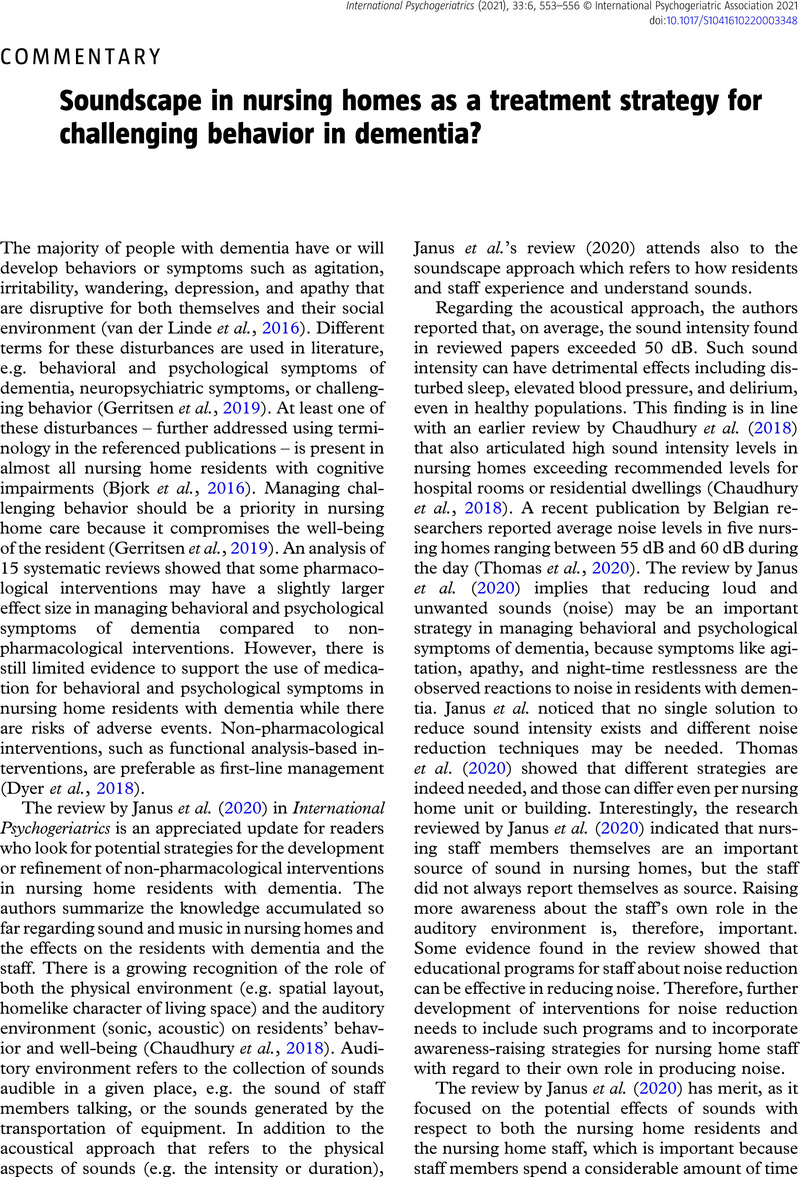Crossref Citations
This article has been cited by the following publications. This list is generated based on data provided by Crossref.
Nunes, Ingrid Bruno
de Santana, Maíra Araujo
Gomes, Juliana Carneiro
Torcate, Arianne Sarmento
Charron, Nicole
de Brito, Nathália Córdula
Moreno, Giselle Machado Magalhães
de Gusmão, Cristine Martins Gomes
and
dos Santos, Wellington Pinheiro
2023.
Music recommendation systems to support music therapy in patients with dementia: an exploratory study.
Research on Biomedical Engineering,
Vol. 39,
Issue. 3,
p.
777.
Kosters, Janouk
Janus, Sarah I.M.
van den Bosch, Kirsten A.
Andringa, Tjeerd C.
Hoop, E. Oomen-de
de Boer, Michiel R.
Elburg, Ronald A.J.
Warmelink, Steven
Zuidema, Sytse U.
and
Luijendijk, Hendrika J.
2023.
Soundscape Awareness Intervention Reduced Neuropsychiatric Symptoms in Nursing Home Residents With Dementia: A Cluster-Randomized Trial With MoSART+.
Journal of the American Medical Directors Association,
Vol. 24,
Issue. 2,
p.
192.
De Pessemier, Toon
Vanhecke, Kris
Thomas, Pieter
Vander Mynsbrugge, Tara
Vercoutere, Stefaan
Van de Velde, Dominique
De Vriendt, Patricia
Joseph, Wout
Martens, Luc
Botteldooren, Dick
and
Devos, Paul
2023.
Personalising augmented soundscapes for supporting persons with dementia.
Multimedia Tools and Applications,
Vol. 82,
Issue. 9,
p.
14171.
Nunes, Ingrid Bruno
de Santana, Maíra Araújo
Charron, Nicole
Silva, Hyngrid Souza e
de Lima Simões, Caylane Mayssa
Lins, Camila
de Souza Sampaio, Ana Beatriz
de Melo, Arthur Moreira Nogueira
da Silva, Thailson Caetano Valdeci
Tiodista, Camila
de Brito, Nathália Córdula
Torcate, Arianne Sarmento
Gomes, Juliana Carneiro
Moreno, Giselle Machado Magalhães
de Gusmão, Cristine Martins Gomes
and
dos Santos, Wellington Pinheiro
2024.
Automatic identification of preferred music genres: an exploratory machine learning approach to support personalized music therapy.
Multimedia Tools and Applications,





